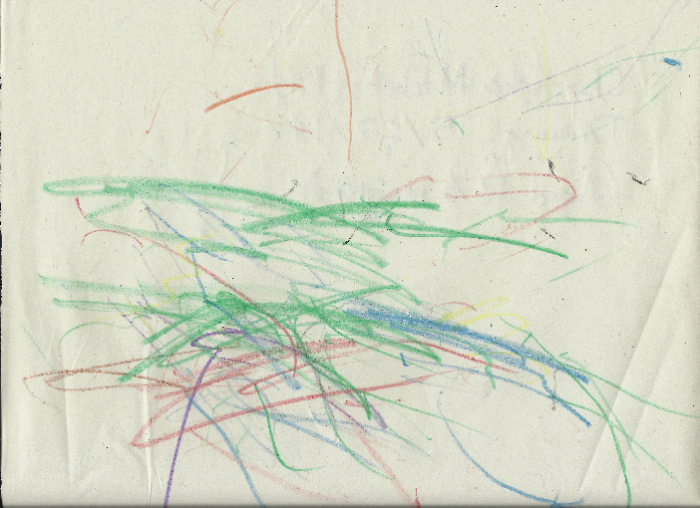The piece is markedly aquatic. Subtle references to coral, fish, waves, and the tidal ebb and flow are implied by the unconventional combination of stylized curves and contrasting erratic angles. These opposing forces are united, however, by an harmonic color palette and a tradition centralized (only slightly offset) composition- recalling the eternal dialogue between Classicism and Expressionism. CM is obviously no stranger to Rauschenberg.
[Make no mistake: I am not suggesting that the piece is intentionally figural. However, as is the case with most Abstract Expressionists, one cannot ignore or discount the visual allusions the pieces evoke. Regardless of intent or origin, whether the figural allusions are intentionally placed by the artist, are subconsciously drawn from the artist’s subconscious (ie. Pollack’s Jungian therapy-influenced period), or are merely the projections of the viewer him or herself (Rothko, in his own estimation), the visual connotations are of undeniable importance in analyzing CM’s style and in determining where he fits (or, in the case of the Naïve or outsider artists, does not fit) in the historic timeline of art.]
Though the piece is unquestionably from CM’s developmental period, it is quite clear that his current interest lies in the expressionistic interaction of line and color: less structured than Stella or Johns, but much more so than Pollack.
Whether he will move toward a more Picasso-esque linearity, gravitate toward the color-oriented Rothko camp, or set up shop somewhere in Cezanne’s combination world of shapes and outlines remains to be seen. However, one cannot deny the strength of the subject matter and the consistency of color choice. These will surely be further developed and explored as the series progresses.

🙂